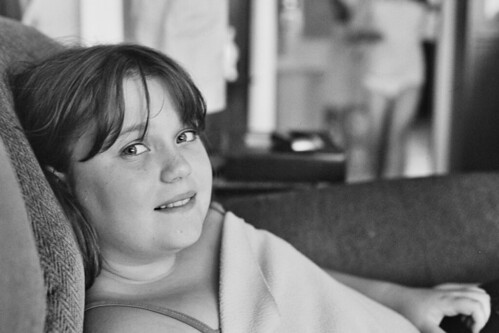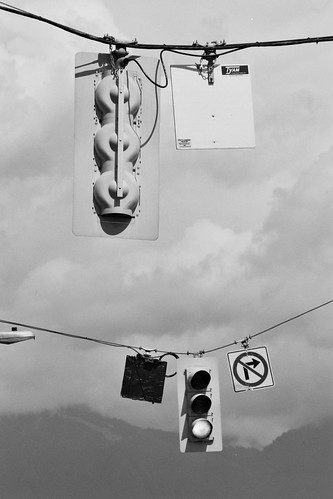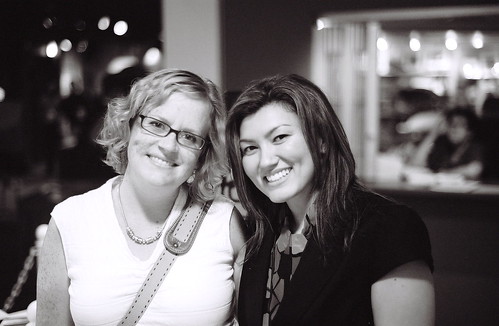Penmachine
30 September 2008
My black and whites are more popular
Since I started taking black and white film photos again back in July, I've noticed something. People like them a lot, on average more than my other pictures.
I'm not sure if it's that I take these photographs differently, because I know they are single shots on a limited medium, and will lack colour, so I compose and shoot them more carefully than others.
Or perhaps it's just that they are striking purely because they don't have colour and people aren't used to that anymore, epecially online. Maybe if I converted some of my other pictures to B&W, they might get a similar response too.
I know I enjoy making those images. It's pricey compared to digital photography, but that's part of what makes them different too.
Labels: film, friends, geekery, nikon, photography
29 September 2008
New site design for Navarik
I've worked for Navarik, a company started by some of my university colleagues, since 2003. But I was involved with the the organization almost from the beginning in 2000, doing freelance writing and editing work and helping out with the website. That site has been through numerous incarnations over the past eight years, including a new version that just launched this week. Here's a comparison of what the home page has looked like over the past three generations (2004, 2006, and now 2008):
The overall feel of the site hasn't changed too radically: the blue-and-white colour scheme has been there all along. The logo, designed by Ryan in 2001, is also much the same. But the company itself has shifted its focus, so that it now describes itself as "a software service provider to the petroleum supply and trading industry." It began back in 2000 as a developer of web applications for small marine shipping agencies and shipbrokers, but now our customers include some of the largest companies in the world, such as Shell and BP.
The fine new site is much more straightforward and reflects what the company does far better than the previous one. Yet it does make me a little melancholy. I've been off work for more than a year and a half because of my cancer treatment, which means that I had nothing at all to do with this redesign, whereas I was in charge of the previous two. This relaunch is the first time I've been uninvolved for many years.
Labels: design, navarik, oil, web
28 September 2008
The world's greatest machines
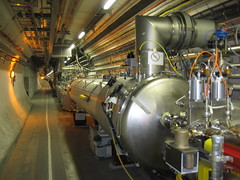 There's been a lot of talk recently about how the Large Hadron Collider (LHC) is the largest and most powerful machine ever built. I guess it is that. But there is another machine I still like better: the Apollo Saturn V moon rocket, retired more than 35 years ago. Each one was constructed not for years and years of experiments by thousands of people, as the LHC is, but for a single task lasting a mere week: to get three men to the moon and back.
There's been a lot of talk recently about how the Large Hadron Collider (LHC) is the largest and most powerful machine ever built. I guess it is that. But there is another machine I still like better: the Apollo Saturn V moon rocket, retired more than 35 years ago. Each one was constructed not for years and years of experiments by thousands of people, as the LHC is, but for a single task lasting a mere week: to get three men to the moon and back.
The Saturn V was the most powerful machine of its time. I still think it is the most important device we've ever built, and as far as I know it remains the most expensive—in adjusted dollars, the Apollo program cost about $135 billion, many times the price of the LHC.
 I've just watched In the Shadow of the Moon again, this time on television. (It was worth seeing in the movie theatre before, for the size of the images.) I was less than three weeks old during the launch and the eventual landing of the Lunar Module. If I'd been an adult, I think I would have burst into tears at both events. I've come pretty close just watching the footage, almost 40 years later.
I've just watched In the Shadow of the Moon again, this time on television. (It was worth seeing in the movie theatre before, for the size of the images.) I was less than three weeks old during the launch and the eventual landing of the Lunar Module. If I'd been an adult, I think I would have burst into tears at both events. I've come pretty close just watching the footage, almost 40 years later.
I'm very happy that people think basic physics important enough to spend billions of dollars constructing the LHC. But, while it is impressive, that device is an experimental apparatus, carefully assembled over many years. Although the Apollo rockets were also a massive endeavour, it happened instead in an astounding rush, a little over eight years from conception to success, less time than it takes for Peter Gabriel to make a new album. It remains the only time we've taken people to another world. That's some really awesome machinery.
Labels: astronomy, moon, movie, science, space
26 September 2008
Eternal sunshine
This is pretty cool: there are a couple of high spots at the moon's south pole (one a mountain, one the rim of a crater) where the sun never sets. Ever.
Labels: astronomy, moon, science
25 September 2008
You too can be Sarah Palin's gay friend
You've gotta love Dan Savage, the world's most straightforward (but not straight), no-BS sex advice columnist and podcaster, who's based in Seattle. If you want to get a sense of the true variety of people's relationships and sex lives, read his column online or in your local paper, or listen to his weekly show. (Be warned: there's lots of swearing and frank sex talk, as you should expect.)
Recent news in the American election reveals that, while vice-presidential hopeful Sarah Palin claimed back in 2006 to have some gay friends, no one has been able to find any of them. So Dan, in his generous way, offers himself as a candidate for the position:
He has some good suggestion for the role he could play in Palin's family life. He's asking other gay people to post videos outlining their qualifications too. While you'll need to be gay to apply (so neither my wife nor I can join in), I don't think you have to be American. Though it might help.
Labels: americas, humour, politics, sex
24 September 2008
The return of AC/DC
Holy crap. The recording for AC/DC's new song, "Rock 'n' Roll Train," and the accompanying video, could have been made anytime in the past 30 years. That's what's so awesome about it:
When AC/DC are on, as they appear to be on this new single, it seems they can still take any other rock band you can name and kick its ass around the block. Angus and Malcolm Young have once more constructed guitar riffs massive enough to be hewn from a cliffside. The rhythm resurrects the band's trademark fist-pumping stomp, and the chorus is a gang-vocal sing-along in the great AC/DC tradition. The lyrics are essentially meaningless, as they should be.
Most remarkably, singer Brian Johnson has somehow lost the Donald Duck shriek he developed about 20 years ago, and he's singing better than ever, gritty and soulful and muscular. All in all, it sounds like 1980 all over again. Gloriously. As The Guardian puts it, "Not clever but, oh lordy, it's big." How the hell did this bunch of old dudes do that?
I've already listened to "Rock 'n' Roll Train" half a dozen times since I discovered it tonight. As a musician, I'd be happy if I could create just one brainless rocking genius song like it, ever. The album it comes from is called Black Ice, and will be out in a few weeks.
Labels: band, guitar, music, review
23 September 2008
Better social environments in school
 My two kids attend the same elementary school I did 30 years ago. Although there is a recent addition, constructed since my older daughter began there in 2003, plus some ongoing seismic upgrading, the building hasn't changed much at all. (It was a relatively new structure when I started there in 1974.)
My two kids attend the same elementary school I did 30 years ago. Although there is a recent addition, constructed since my older daughter began there in 2003, plus some ongoing seismic upgrading, the building hasn't changed much at all. (It was a relatively new structure when I started there in 1974.)
It was always a good neighbourhood elementary school, but one thing that has improved dramatically is an aspect of the social environment. The first week of school has all the students in mixed classes with others of various grades: final class assignments don't come until the second week. Throughout the year, the school organizes events and regular volunteer jobs so that more senior students (grades four, five, six, and seven) mentor and support younger students (kindergarten through grade three).
The consequence is that students get to know each other across all eight class years in the school. Even in grade one, my daughter was able to wave and say hi in the hallway to grade seven students she knew. And now that she's in grade five, she has buddies in lower grades. Her sister, in grade three, knows kids both older and younger.
That's a big change from the '70s: when I started, grade seven students were scary and huge and intimidating unknowns. They remained that way pretty much until I was in a split grade six-seven class years later. And by then I had no idea who the little kids were.
I don't know if this is a common change in elementary schools in Greater Vancouver, or Canada, or more generally. Our school administration has put a lot of effort into helping students understand their peers of all ages and background. Of course there is still bullying, and fights break out, but no more (and perhaps less) than I remember. I think that overall it's more of a community than when I went there.
Labels: family, friends, memories, school, vancouver
21 September 2008
Last day of summer
Today, my wife and I slept in (me more than her), took our kids to IHOP for brunch, had the car washed at Oasis, bought a few things at the insanely busy new Costco in Burnaby, then had a steak barbecue in our backyard with a couple of our friends and their son. My wife Air and our friend KA recorded their podcast while the rest of us took their dog Dizzy for a walk, before the rain really set in.
It was rampantly consumerist, yes, but it was a fun Sunday, and fun last day of summer for 2008.
Labels: family, food, friends, shopping
18 September 2008
For better or for worse
There's no good reason to try to determine which has been the worst year of your life, but I do consider it from time to time. It could have been last year, when I found out I had cancer, went through painful simultaneous chemotherapy and radiation, had four different surgical procedures (one of which kept me in hospital for almost a month), lost 60 pounds, and ended off with yet more chemo and no end in sight for treatment, even though I was feeling better.
It could be that. But it could also have been 2004, when I nearly lost my wife Air to clinical depression. I alluded to what happened that year, but never wrote about it it any detail, to maintain her privacy.
Now, almost five years later, she has written a four-part series on surviving major depression, as guest blogger at Mental Health Notes. She covers her initial post-partum depression back in 2000, the catastrophic breakdown in 2004 that took her to our local hospital's mental health ward for two weeks, her subsequent intensive outpatient treatment program at the hospital and gradual return to work, and the silver linings she has learned about in the years since, and now that she's had to take care of me through all my health problems.
In that weighty year, the worst moment for me was one day, after bringing our daughters to visit Air in the hospital. We had played cards with her in the patient lounge, on the ward where nothing is sharp, and there is nothing mounted to the wall or ceiling that will hold a person's weight. I brought the kids back to the car and buckled them into their seats, then I slumped on the outside of the door, and I cried and cried, not even caring what the girls thought, or whether some stranger might see me there, weeping against the station wagon in the hospital parking lot. At that moment I didn't know if my wife would ever leave that ward, or if she did, what would happen. I feared our life together would change permanently.
And it did. But, in many ways, for the better. When you get married, there's a reason you pledge to stay together for better or for worse, and part of it is that the worse forges something in your marriage that the better never could.
I look at her writing this way: I don't have to be brave to admit I have cancer. It brings almost nothing but sympathy from everyone who hears. I wish it were so for depression and other mental illness, but it isn't. As someone who's never been clinically depressed, I regret terribly that I really didn't understand what Air was suffering at all until it had gotten very, very bad in late 2003 and early 2004. I didn't have a fucking clue. And most of the rest of us don't either. Many people who have no experience with it remain judgmental about mental illness, so for her to write about it candidly now, when she doesn't have to—well, that's brave.
Her treatments have worked extraordinarily well over the past four years, but as with my cancer, as long as she is alive her battle is never over. I hope I am a better help in her fight now than I was in my previous ignorance. As my love and the person who cares for me, she is certainly the best reason to try my hardest to stick around.
Labels: blog, cancer, depression, family, love, web
17 September 2008
Thirteen coolest Antarctic vehicles
These are probably some of the most specialized vehicles in the world. (Via J-Walk.) Some might look familiar from ski resorts. Most won't.
Labels: antarctica, snow
16 September 2008
You have a point
The camera collage I posted to Flickr a couple of months ago is by now my most popular picture there, viewed more than 15,000 times. (Yes, Flickr is a haven for gearheads, never mind the photographic art.)
My favourite comment on the page comes from Axl: "I like the black one with the buttons and stuff."
Labels: geekery, humour, photography
15 September 2008
Super-awesome new Gmail feature
If you use Google's Gmail, check out the experimental Google Labs settings. There are several cool options, but I turned on the newest one right away: the Forgotten Attachment Detector.
"Many of us have experienced the embarrassment of having sent a message without attaching the file we said we were going to attach," writes author John Kotker. "Turn on the Forgotten Attachment Detector in Labs, and you'll get an alert if you mention attaching a file but forget to do so."
That's a small little bit of awesomeness added to my day. (Via Steve Rubel.)
Labels: email, gmail, google, web
Camera Works: shutters, flashes, and sync speed
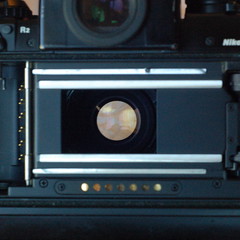 The shutter of a camera seems pretty simple. For years, I thought of it the way it's described: as a shutter curtain. You know, as a sheet (metal, cloth, whatever) near the back of the camera that behaves like this:
The shutter of a camera seems pretty simple. For years, I thought of it the way it's described: as a shutter curtain. You know, as a sheet (metal, cloth, whatever) near the back of the camera that behaves like this:
- Most of the time, it's closed, to keep light from hitting the film or digital sensor.
- Press the camera button, and the curtain swishes open (really really fast), exposing the film or sensor to light from the camera lens. Click!
- Then, it stays open for the time you set (whether 4 seconds of 1/4000th of a second).
- Finally, it swishes closed again (really really fast), returning the back of the camera to darkness. Click!
That's straightforward, especially once you have a grip on focal lengths and f-stops. But it's also wrong. Camera shutters are a bit more complicated than that, and understanding that complexity can help you make better photographs.
How does a shutter work?
If you have a point-and-shoot digital camera, or a camera in your mobile phone, you'll never see its shutter. That's partly because you can't get inside the camera to take a peek, but also partly because many small digital cameras don't even have a shutter. (I'll explain why below.)
But let's ignore that for now. In the long, long history of film photography, cameras had to have some sort of shutter, since that was the only way to achieve two important goals:
- Keeping light from hitting the film when you didn't want it to.
- Making sure that light did hit the film when you wanted it to, but only then.
Camera manufacturers spent over a century figuring out how to make shutters faster and more accurate. There have been many designs in that time. Some tried leaf shutters that are part of the lens, with blades that open like the lens's aperture. (Many medium-format cameras use in-lens leaf shutters.) But the type most photographers are familiar with is the focal plane shutter, which sits right in front of the film and, in its simplest form, behaves something like the curtain I described above.
Before the 1980s, many SLR shutters were fully mechanical, relying on springs and levers for actuation and timing. In recent years, only specialist and boutique film cameras such as the Nikon FM3a and Leica MP retained mechanical-only shutters, so those cameras are fully functional without any batteries at all, as long as you have an external light meter (or excellent intuition about proper exposure).
Higher-end modern film and digital cameras, such as all digital single-lens reflex (DSLR) models, still use focal-plane shutters. But like most film camera shutters made since the 1980s, they are electromechanical: their mechanical shutters are controlled by the camera's electronics. They always need batteries (or a power adapter) to work.
On SLRs, you can remove the lens and raise the mirror to see the front of the shutter; on film models, you can also open the back to see its rear side too. Take a look at such a shutter (mechanical or electromechanical) and you'll find that, rather than resembling a simple curtain, it consists of many parts, more like an airlock of some sort:
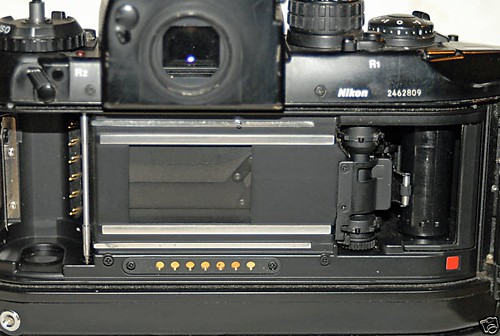
Rear view of the shutter (centre) on my Nikon F4 film SLR.
According to Nikon's promotional materials, the shutter on my F4 camera (the world's top-of-the-line professional 35 mm SLR when it was introduced in 1988) includes more than 200 components, which is more than some entire cameras of the same vintage. It remains one of the most sophisticated still-camera shutters ever made, with many miniscule levers and cams, a tungsten-alloy shutter balancer to minimize vibration, curtain components made of both metal and a carbon fibre–epoxy compound, and a maximum shutter speed of 1/8000th of a second.
Two curtains for extra speed
It's amazing that a physical shutter mechanism can open and close in 1/8000th of a second. So amazing, in fact, that it doesn't do that at all. Instead, pretty much every focal plane shutter you'll ever encounter has at least two curtains (which can comprise numerous parts each). One opens, the other closes. Here's how they're put together in my Nikon F4:
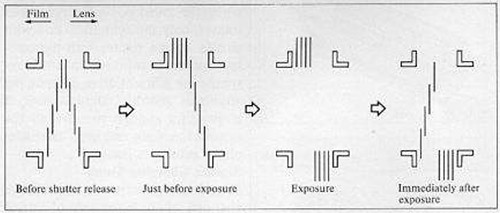
Nikon's diagram of how the F4 shutter works. Notice that there are two separate shutter curtains (one in front of the other), each made of four blades which are a fraction of a millimetre thick. The diagram doesn't show all the tiny levers, cams, springs, screws, fasteners, motors, and such needed to make this arrangement actually work. Diagram from the Nikon F4 Technical Guide, © 1988-1996 Nikon.
This shutter opens and closes from top to bottom, known as a vertical-travel design, which is also most common on modern digital SLRs and other cameras. When the camera isn't in use, both sets of shutter blades are down, keeping light from reaching the film. Here's what happens for relatively slow shutter speeds:
- When you press the shutter button, the camera's mirror flips up.
- Then the back four shutter blades slide up out of the way (very very fast), layering over each other like an elevator door opening on its side, but leaving the front shutter blades closed to keep light out. The film has not yet been exposed, but the shutter is now ready to do it.
- Next, for the actual exposure, those closed front four shutter blades slide down (very very fast) to let light from the lens reach the film.
- After the requisite interval (say 1/30th of a second), the waiting rear blades follow, sliding down again (very very fast) to cut off light to the film once more.
- When everything's done, the front blades slide back up and the mirror flips down into position.
That last move both returns the lens image to the viewfinder up above via the mirror, and makes sure no more light gets to the film, even if you bump the camera around, because both sets of curtains are closed. To see it all in the real world, you can watch a modern Nikon D3 SLR do its thing in this high-speed close-up frame-by-frame photo sequence of its focal plane shutter in action. There are also some great, informative animations of the process at Digital Photography School.
If you're looking through the viewfinder during this time, the view momentarily goes black (known as the blackout interval) while the mirror gets out of the way, so one disadvantage of SLR camera designs is that you can't actually see what you're photographing at the very instant you take the picture. But that instant is pretty short: usually something like a tenth of a second for all the flipping and sliding and springing to take place.
Many older cameras used horizontal-travel shutters, which are usually slower because the parts have to travel a bit farther. And lots of electromechanical and mechanical shutters use fewer parts, some of which may be heavier or which might move more slowly for other reasons, but they all work essentially the same way, with two curtains that follow each other to expose the film or sensor, and then cover it up again after a short time.
However, when the shutter speed gets really quick, things change a little. How fast "really quick" is depends on the shutter design and materials, but in general for SLRs, the more you spend on the camera, the quicker the shutter. Nevertheless, somewhere around a threshold of 1/60th or 1/90th or 1/125th or 1/200th or 1/250th or maybe 1/300th of a second, even the most modern vertical-travel focal plane shutters with the lightest, thinnest, best-engineered blades can't fully open and close any faster. (Start calculating the forces on those accelerating and decelerating sliding plates of metal and carbon fibre, or pieces of rubberized cloth in older cameras, as they whip open and closed really really fast, and you'll see why.)
So, decades ago, camera designers figured out a clever trick. It's not as if the entire film plane has to be exposed all at once. For a 1/1000th of a second exposure, for example, if the front curtain starts opening, and then, 1/1000th of a second later, the back curtain begins following, even before the front curtain has moved very far, then the two curtains can move across the film plane like two cars on a highway, with a gap between them.
How fast is fast?
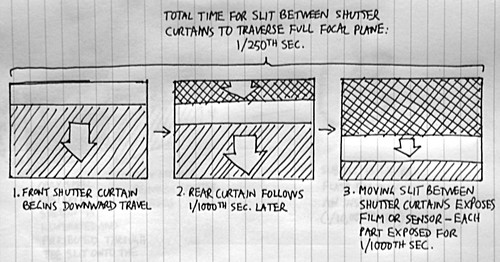
For fast exposures, the rear shutter curtain follows the front one like a drafting car on the highway, creating a moving slit of light.
The gap is then a narrow slit of light moving across the film (top to bottom or one side to the other, depending on the shutter design), which means that while the slit of light can take a relatively long time to cross the gap, any particular slice of the film (or digital sensor) only gets exposed for a short fraction of that time. The slit can move at 1/60th of a second on some old mechanical cameras, or more like 1/200th or faster on modern DSLRs—but any particular slice of the film (or digital sensor) only gets exposed for 1/1000th of a second as the slit passes over it.
High-end professional shutters like the one on my F4, and even on new pro cameras like the Nikon D3 and Canon EOS 1D Mark III (Canon, please clean up your camera names!), can fully open and close as fast as 1/250th or 1/300th of a second, and their maximum shutter speeds go up to 1/8000th of a second, which means the slit passing over the focal plane is really, really thin. Those maximums have been about the same since at least 1988, so electromechanical focal plane shutters reached some sort of physical limit a couple of decades ago.
(Okay, that's not quite true. Minolta managed 1/12,000th of a second with an even-narrower slit in 1992. The Canon 1D could open and close in 1/500th of a second, and maxed out at 1/16,000th, but it had a hybrid shutter like those I talk about below. No current DSLR, especially the full-frame variety, comes close to that.)
You can imagine a few circumstances where this design could be a problem: freezing photos of really fast-moving objects (nearby aircraft, for instance) requires fast shutter speeds. Even 1/250th of a second might be slow enough to blur a passing jet. But a faster shutter speed doesn't really move the shutter mechanism faster, so the moving-slit design could theoretically smear out the final image if the object is moving fast enough and you're not moving the camera to follow.
So, again in theory, a fast passing airplane could be in different positions as the slit moves, smearing differently if the jet is moving with or against the direction the slit travels. However, in practice that almost never happens, even for supersonic jets, unless you are a specialized technical photographer. But in the early days of photography, it happened more frequently:
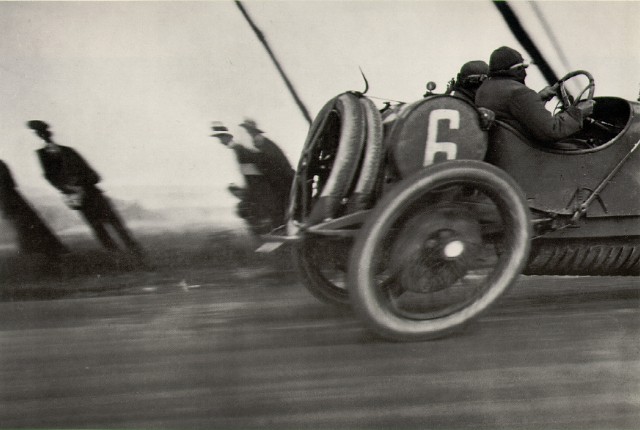
In the comments below, Andy Baird pointed me to this famous photo, which he noted "was taken by Jacques-Henri Lartigue in 1913. His large vertical shutter couldn't move very fast, so the wheels in the photo are ovals, because they were imaged as a series of horizontal slices." The racing fans are even more distorted because Lartigue was panning to follow the car. It's a great effect, even if it wasn't intentional.
The same effect is common when capturing motion using some electronic camcorder video shutters, or even with the live-view video mode on the new Nikon D90. It's noticeable enough there that reviewers have called the resulting video jello movies.
The main circumstance where the slit is a problem for most of us is when we use a flash. So camera manufacturers generally make it impossible to take flash photos with really fast shutter speeds. Mostly. Here's why.
How does a flash work?
If you took photographs with inexpensive cameras in the 1970s or earlier, you remember flashbulbs and flashcubes: expendable, single-use (or maybe four-use) flashes that attached to your camera, and which basically created a contained explosion (with audible paf!) to illuminate your pictures. They were slightly safer descendants of the flammable flash powder used by old-timey photographers.
Those flashes were good for lighting up a dark room, but didn't freeze action very well, because they took a fraction of a second to heat up (requiring the camera to wait a moment after you pressed the shutter release before it really opened the shutter) and lasted about 1/30th of a second before fizzling out. On the good side, when using a moving-slit shutter for faster exposures, a flashbulb was essentially "on" for the entire time the slit moved across the film—as far as the film was concerned, an old-style flashbulb was the same as any continuous light, like a studio lamp, a bright house fixture, or even the sun. You could use a flashbulb at any shutter speed, no matter how fast (though some of the light was wasted at faster exposures).
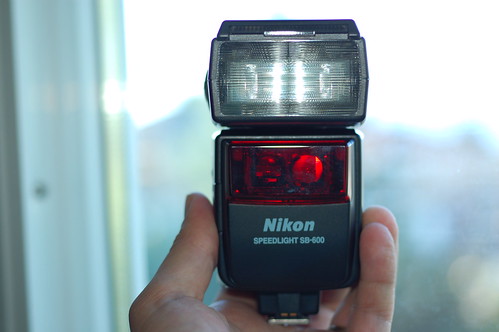
My Nikon SB-600 Speedlight flash, a modern descendant of the first strobe flashes of the 1960s.
But in the 1960s Nikon came out with what was generally a much better design: strobe flashes that they called (and still call) "Speedlights." Other manufacturers soon followed. By electronically creating a small, high-voltage electrical arc, like a lightning bolt, inside a sealed tube of inert xenon gas, strobe flashes generate a powerful and very brief pulse of light.
Speedlight flashes are great. They run on batteries, are quite power efficient, and last for thousands and thousands of pulses before they wear out. Nearly every modern camera (except mobile phones) either has an electronic strobe flash built in, or has a "hot shoe" you can attach one to.
These modern electronic flashes also freeze action very well, because their pulses last at most 1/1000th of a second. At lower powers, the burst can be 1/10,000th of a second or even substantially less (the only way for the strobe to emit less light is for the flash duration to be shorter). So, most of the time, as far as an electromechanical shutter is concerned, flashes are now instantaneous: rather than being "on" the whole time the shutter is open, they create an instant "pop" of light at some time during the exposure, usually timed to be just as the shutter opens.
And so we run into our moving-slit problem. If your flash is instantaneous, at fast shutter speeds where a slit is moving across the film or sensor plane, the flash "pop" will only send light through the slit, and only during part of the exposure:
- If the flash is being used to light up a dark image, the resulting photo will be totally black except for one flash-lit band across the image.
- If there is some ambient light and you're using the flash for "fill," there will be a bizarre stripe of bright flash-lit exposure across an underexposed background image in the rest of the frame.
Neither is what you want.

If the moving shutter curtains only expose a slit of light to the near-instantaneous flash pulse, only that slit gets recorded on the film or digital sensor. The rest of the frame stays black or underexposed. That's bad, so modern cameras make it almost impossible to do.
Flash sync, or X-sync
So, you only want to use a strobe flash like everyone has now when the shutter is completely open, and you can only do that if the exposure is at or slower than the threshold speed we talked about above, when the rear curtain doesn't start moving until the front curtain is already all the way across the focal plane. On an old camera that could be 1/60th of a second. On a top-of-the-line pro DSLR, it might be 1/300th of a second.
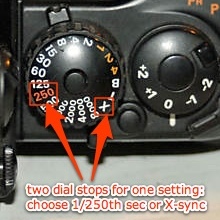 That value is so important that, ever since the Speedlight revolution of the '60s, camera makers have called it the flash sync speed of the camera: the fastest exposure you can set where the focal plane shutter is completely open for at least an instant, during which the flash can fire and expose the entire frame. On some cameras with a shutter-speed dial, that value is either highlighted in red or indicated with an X (or, on my F4, both!), so it's also called the X-sync speed, or just the sync speed.
That value is so important that, ever since the Speedlight revolution of the '60s, camera makers have called it the flash sync speed of the camera: the fastest exposure you can set where the focal plane shutter is completely open for at least an instant, during which the flash can fire and expose the entire frame. On some cameras with a shutter-speed dial, that value is either highlighted in red or indicated with an X (or, on my F4, both!), so it's also called the X-sync speed, or just the sync speed.
The slit exposure problem is sufficiently undesirable that "newer" cameras (i.e., most made in the last 25 or 30 years) generally won't even let you try to use a flash at shutter speeds faster than X-sync—they'll force the flash sync speed on you no matter what you do. If you turn on, flip up, or mount a flash on your camera, chances are it will set the shutter speed to the sync maximum (1/60th or 1/90th or 1/25th or 1/200th or 1/250th of a second, or whatever, depending on your camera). It will do that no matter what shutter speed you've told it otherwise, often even in fully manual mode.
Slower exposures are also fine with flash, and give you lots of creative options, from using fill flash to balance out harsh shadows, to creating nice motion blur while still freezing your main subject in sharp focus. Some let you control the flash's power, pre-pulse the flash to reduce "redeye" in your subjects (by making their pupils contract before the true exposure), or determine whether to fire the flash either when the shutter first opens or when it starts to close ("rear-curtain sync") for different effects. Therefore, cameras happily let you use flash at shutter speeds slower than X-sync, while blocking you from those that are faster.
Except when they don't. Which brings us to our last topic.
Wait a minute! My camera can use a flash at faster shutter speeds!
Here's a funny thing. My Nikon D50, an entry-level digital SLR introduced in 2005, has a 1/500th of a second flash sync speed. So did its predecessor the D70, and even the D1 from way back in the year 2000, as well as the newer D40. But other Nikon models (both old and new, many of them much higher-end cameras like the D3), have X-sync speeds of 1/180th, 1/200th, or at most 1/250th of a second.
Even the D40x and D60 offer only 1/200th flash sync, even though they are otherwise barely different from the D40, with its 1/500th sync! Other manufacturers show similar discrepancies. And even cheapie point-and-shoot digicams sometimes have flash sync faster than 1/250th of a second. Cameras costing $5000 and up, whose shutters have much higher total top speeds of 1/8000th of a second, have slower flash sync than cameras costing $600, or even $200! WTF? Is this a ripoff?
(Hint: no.)
Here's another funny thing. Some camera-flash combinations, usually on DSLRs using higher-priced external flashes from the same manufacturer, offer what they call "High Speed FP" (Focal Plane) mode, or something similar. With those setups, in most circumstances, flash photography is still limited by the usual X-Sync speed of 1/250th of a second or slower, but if you put the camera and flash into a special high-speed flash mode (controlled either from the flash, or from the camera, or both), you can use the flash at any shutter speed the camera supports, right up to 1/8000th of a second. But you have to specifically invoke that mode. If it offers unlimited flash sync, shouldn't it be on all the time?
(Hint: no.)
Let's tackle these two puzzles in order.
Flash sync with electronic and hybrid shutters
I mentioned back at the beginning that many point-and-shoot digicams, as well as all mobile phone cameras I know about, don't have shutters at all. Their instruction manuals might say they have shutters, but they don't: the digital image sensor is always exposed to light from the back of the lens—except when the lens cap is on or, as in many of those devices, if the lens aperture closes down when the camera is turned off.
Instead of an electromechanical shutter with light-blocking blades, these cameras have what is misleadingly called an electronic shutter. When you press the button to take a picture, the camera electronics briefly turn the sensor electronics on then off again. The sensor stays on for the exposure interval (1/30th of a second, or 1/1000th of a second, or whatever), so it's also a bit misleading to call it a "shutter speed" anymore, but we do out of tradition, and to be consistent.
This is a completely new way of doing things: film, of course, was always light sensitive and had to be kept out of the light right until it was processed. Electronic sensors can be told when to be light-sensitive, and can also turn on and off very quickly. And since there's no moving slit of light from shutter blades, if you're using a flash, it can fire and expose the whole sensor surface to light at once. So why don't all digital cameras use electronic shutters and get rid of those old mechanical ones once and for all?
There are always compromises with technology, especially in photography. Electronic shutters—or, more accurately, switchable digital light sensors—are complicated, because in addition to all the individual light sensor pixel photosites, microlenses, electron storage wells, and circuitry to move the data from them to the camera's electronics, they need additional electronics to control the switching.
The switching circuits take up space on the sensor surface, which means that:
- The manufacturer can't pack as many megapixels onto the sensor, or
- It won't be as sensitive to light because it captures fewer photons (meaning it doesn't perform as well photographing low-light scenes), or
- The images it produces have more noise in them.
Or all three. In addition, there are different types of sensors, such as CCD (Charge-Coupled Device) and CMOS (Complementary Metal Oxide Semiconductor), with different sub-types in each of them, some of which are more or less suitable to including electronic shutter technology, at least with current manufacturing processes.
There are also different types of electronic shutters, with some (called rolling shutters) that behave a bit like the film slit, or like the scanning electron gun of an old cathode ray tube (CRT) television, "painting" the image from top to bottom. That sets its own limit on how fast the shutter speed can be with a flash.
Finally, since the camera sensor remains exposed to light even when it's not turned on, unusual lighting situations, such as having the sun in the frame, can overload photosites and cause nasty "blooming" effects (scroll down here to see an example) that are at least as obnoxious as the slit-flash problem, as well as more subtle artifacts like banding or uneven noise.
As a clever compromise, on some lower-priced digital SLRs, camera makers have chosen hybrid shutters that use both focal plane curtains and switchable sensors. So for fast 1/500 flash sync, my Nikon D50 performs a neat trick:
- It opens its electromechanical shutter blades the usual way for an SLR, but relatively slowly (maybe 1/125th or 1/180th of a second, I'm not sure)—but the sensor is still turned off.
- While the shutter is open, the sensor turns on briefly for 1/500th of a second, like the electronic shutter on a point-and-shoot camera.
- While the sensor is on, the flash fires.
- The sensor turns off again.
- Lastly, the shutter closes again at its leisurely pace.
While that can cause a few image quality problems, such a design let Nikon install a less expensive, slower shutter while still offering faster 1/500 flash sync. However, it seems that such a design was only possible on the 6-megapixel CCD sensor used on the D70, D70s, D50, and D40. Once the company started using 10-megapixel sensors for the D40x and D60, those cameras had to revert to the normal electromechanical-only shutters with 1/200 sync.
So, in short, electronic shutters have various compromises. Currently, quality higher-resolution sensors that work well in low light also don't have the circuitry to act as electronic shutters, even in hybrid designs. So, for cameras where reliable performance, image quality, and low-light handling are most important, manufacturers continue to use old-fashioned electromechanical bladed shutter curtains, at least for now.
High-speed flash sync
With some higher-end external flashes, certain SLR cameras support what's known either as High Speed Sync (Canon, Sony, and others) or FP Sync (Nikon), which lets you take flash photos at any shutter speed the camera supports, right up to 1/8000th of a second. That's especially useful when using fill flash in daylight, particularly with high-powered telephoto lenses in wildlife or sports photography. How you set up High Speed Sync depends on your particular camera and flash: the controls might be on the flash unit, or in the camera menus, or both.
How is it that the High Speed Sync gets around the slit-flash problem and the traditional X-sync limit I've been talking about this whole time? It's not magic. Remember that the reason X-sync is an issue is that the flash burst is effectively instantaneous, and so only illuminates the focal plane through the moving shutter slit at one moment, rather than the entire time the shutter curtains are moving.
But newer strobe flashes can fire repeatedly, and do so in extremely rapid succession. In High Speed Sync mode, the flash fires its near-instantaneous bursts of light over and over, thousands of times per second, for the entire time the shutter slit crosses the focal plane. Effectively, in High Speed mode, the flash fires repeatedly like a machine gun, paf paf paf paf paf..., and acts like it's "on" for the entire X-sync time of 1/200th or 1/250th or 1/300th of a second, even though the exposure for any given slice of the sensor might be only 1/8000th of a second at top shutter speed.
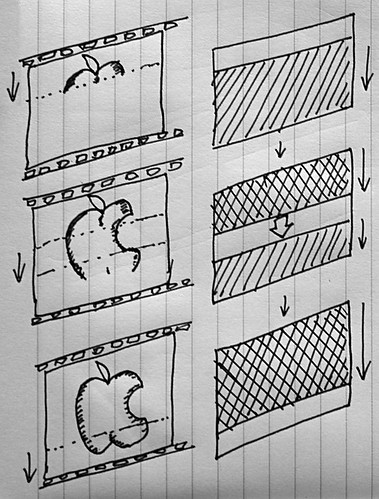
With the flash firing repeatedly thousands of times each second in High Speed mode, the light on the subject is effectively continuous, like a lamp or the sun. Flash illumination passes through the slit the whole time it is moving across the focal plane, so the entire subject is exposed to the film (or sensor) behind the shutter.
There are problems with that approach. It wastes a lot of light and power compared to the usual single flash burst, so the flash unit heats up, takes longer to recharge, and drains its batteries much faster. That's why it's not the default setting, and why only more powerful external flashes support it. A small pop-up flash on a DSLR that tried to fire repeatedly at full power might even melt, or at least suck the camera's battery dry pretty fast.
Old technology even in modern times
All current digital SLRs, as well as esoteric cameras like the Leica M8 digital rangefinder, use an electromechanical shutter of some sort, either as a hybrid design combined with an "electronic shutter" switching sensor, or with the traditional shutter alone. Most of the time, the old problem of the moving shutter slit still forces us to use a slower X-sync when taking flash pictures on DSLRs, even when cheaper point-and-shoot cameras can sync at higher speeds using electronic shutters. High Speed/FP Sync modes on DSLRs are one answer, but they are power hungry and only work with higher-end external flashes for some cameras.
I'm sure engineers at Canon, Nikon, Sony, Olympus, Pentax, and others are working on new ways to make flash sync speeds faster again. Electromechanical shutter designs started to hit their physical limits 20 years ago, but at the moment, having "slower" X-sync speeds of 1/200th or 1/250th or 1/300th of a second is a reasonable tradeoff with modern high-resolution, low-light digital sensors. Focal plane shutters have a century of design refinement behind them, and have proved reliable over decades of hard use, so they're not ready to be sidelined just yet.
Read more
Some useful resources:
- Wikipedia: The Science of Photography
- Thom Hogan: How digital cameras work
- Why digital cameras have mechanical shutters
- Nikon D3 focal plane shutter in super-slow motion
- Sync speed explained
- Photo.net forum: Mechanical vs. electronic shutter (image quality and sync speed)
- Photo.net forum: Mechanical vs. electronic shutters in DSLRs
- Wikipedia: Electronic flash
- Ken Rockwell: Sync speed
- High-speed sync for flash at any shutter speed
- Strobist: Control your world with ultra-high sync
- Photography 101.6: Shutter
« Previous: crop factors and "35 mm equivalent" lenses
Labels: barcamp, cameraworks, geekery, photography
13 September 2008
Stevie Wonder on Sesame Street again
Some time ago I linked to an awesome Stevie Wonder performance of "1-2-3" on Sesame Street from 1972. Now Bill has found another one from the same session:
Watch the drummer smile hugely just as Stevie and the band kick in at the beginning of the song, and feel the groove get stronger and stronger as the song speeds up. "Superstition" has been one of my favourite songs since I was a very little kid (probably since around the time of the video). The circular horn line in particular is buried primally in my hindbrain somewhere.
How could Stevie Wonder be that awesome 35 years ago, and then hardly put out any music over the past couple of decades? Damn.
Labels: band, memories, music, steviewonder, television
12 September 2008
Indian Arm
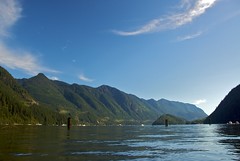 Indian Arm is a forbidding, steep-sided wild fjord, which is nothing unusual on the British Columbia coast. What is unusual is that I can see it (or at least the mountains that surround it) from my front window. Mere minutes from Vancouver's urban sprawl, the waters of the Arm are frequented by boaters of all sorts—but the slopes rising from its shores are too steep and rugged, and almost no one ever traverses them.
Indian Arm is a forbidding, steep-sided wild fjord, which is nothing unusual on the British Columbia coast. What is unusual is that I can see it (or at least the mountains that surround it) from my front window. Mere minutes from Vancouver's urban sprawl, the waters of the Arm are frequented by boaters of all sorts—but the slopes rising from its shores are too steep and rugged, and almost no one ever traverses them.
Back in 2003, engineer, rock climber, and trailbuilder Don McPherson completed his project of many years: a trail around the entirety of Indian Arm. But it's no stroll, nor even a hike. The "trail" is really simply a route, a roughly marked, 70 km, four-day (minimum) slog up and down mountain ridges, along cliffs and valleys, and through thick forest. The elevation map is insane. McPherson himself writes:
Traveling the easy way is a 16,500 ft (5500 m) elevation gain, and nearly a 20,000 ft descent. A climbing rope and the knowledge of how to use it should be included in your 35-50+ lb pack. I do not recommend this route to anyone.
There's an endorsement. His "easy way" (from west to east) starts 1000 metres up Seymour Mountain (there's a parking lot for the ski area), ascends to near its summit, and then follows the alpine ridgeline of the mountain range behind. All that climbing and dropping means that, if you walked the whole route, you would ascend and descend as far as if you were climbing 14,000 ft Mt. Rainier in Washington.
I will never hike that trail, which is one reason it fascinates me. Years ago, I rode a mountain bike route along logging roads from Squamish to Indian Arm, which ended at the fjord's northern tip. But we had booked a water taxi to return us to Vancouver, because McPherson's crazy trail would have been the only path directly back, even if it had been finished back then. There has never been a road, and probably never will be.
Vancouver is a substantial city, but we have always been a city at the edge. To the west lies Georgia Straight, then the Pacific Ocean. To the east and north, craggy and glaciated mountains as rough as anywhere. Indian Arm makes sure we don't forget it.
Labels: environment, extremesports, park, vancouver
11 September 2008
Chemo is suddenly over again, for now
So, how do I put this? The chemotherapy isn't working (at least, not well enough), so my doctors have cancelled it and we're looking for something else to keep the cancer from progressing. That may include different, more experimental forms of chemo, or surgical radiofrequency ablation (RFA) of the spots in my lungs. In my initial reading, the RFA approach looks like it could be promising.
My emotions about this development are all over the place. To know that the largest metastatic lesion in my lungs has grown from 1.4 cm to 1.6 cm in diameter, and the smaller one from 1 cm to 1.4 cm, is dismaying, because the panitumumab and irinotecan I was taking weren't doing the job of stopping or shrinking those tumours. On the other hand, I may have been misinformed about there being four metastases; there might be only two. I'm not sure and will have to ask. They are small, and not growing extremely fast.
In addition to that, now I can avoid spending two days in bed every two weeks, feeling like I'm going to throw up. My pervasive dry skin and facial rash, although under control, should now abate as the chemo drugs flush out of my system. Finally, since it will take a few weeks to figure out and schedule my next treatments, whatever they are, I'm taking the chance to try to have my ileostomy surgically reversed, so that my intestines function normally again for the first time in well over a year and I can ditch the colostomy bags forever. That could happen in less than a month.
We found all this out a couple of days ago, which happened to be my wife Air's 40th birthday. Fortunately, we'd already had a big family-and-friends barbecue last weekend to celebrate that (plus my mom's upcoming 70th), so the news only dampered the day itself, not the party. Last night she and I went for dinner at the beautiful Horizons restaurant here in Burnaby, to mark her birthday and to celebrate at least the end of chemo, for now.
This all reminds me that while my medical team and I keep looking for a cure, something to destroy the cancer completely, more likely we're just buying me time. How much time, no one knows. Months? Years? Right now, other than the dry skin, I feel better than I have at any time since my diagnosis in January 2007. I feel less like a dead man walking than ever, but the future remains a mystery.
Yet on September 11, another dreadful anniversary, the weather here in Vancouver is once again beautiful, and there's laundry to be done. Time to load up the iPod and get to it.
Labels: anniversary, birthday, cancer, chemotherapy, death, pain, surgery
10 September 2008
Adam Savage laughs maniacally
I've never seen this effect (via Bad Astronomy) before:
Man, I just laughed and laughed out loud. No, you should not try it at home.
Labels: biology, geekery, humour, mythbusters, science
08 September 2008
Thinking about science
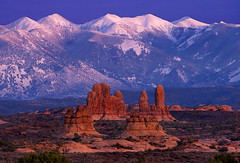 How strange that many people find science distant, or useless, or boring, or suspicious. I think the scientific impulse is naturally human, and that only the way some of us learn about it, and the way it is presented in our societies, is what mutes our interest.
How strange that many people find science distant, or useless, or boring, or suspicious. I think the scientific impulse is naturally human, and that only the way some of us learn about it, and the way it is presented in our societies, is what mutes our interest.
Today's link on Daring Fireball to Wired reminded me of that. Writer Clive Thompson says that:
Science isn't about facts. It's about the quest for facts.
A few months ago, web comic xkcd made a similar point in reference to MythBusters:
Ideas are tested by experiment. That is the core of science. Everything else is bookkeeping.
I learned lots of things from my science degree, but the key thing was that it's not a catalogue of knowledge, but a process to find that knowledge. A process that, fundamentally, is fun for the people who practice it. We should all understand that to be the foundation for the many things we have invented and come to know over the past few centuries.
Labels: biology, education, mythbusters, science
06 September 2008
Two looks ten years back
It's weird to think that my website here is older than Google.
And valued a tad less on the markets, too.
Labels: anniversary, birthday, blog, google, web
04 September 2008
Up to ten thousand
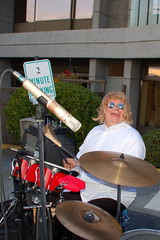 It's not exactly a brilliant piece of photographic art, but it is pretty funny: this is the 10,000th picture taken with my Nikon D50 digital camera since I got it pretty much exactly two years ago. I didn't even take the photo, which is of "Bongo Neurotic," who was playing percussion with us yesterday; guitar player Sean borrowed my camera to snap it.
It's not exactly a brilliant piece of photographic art, but it is pretty funny: this is the 10,000th picture taken with my Nikon D50 digital camera since I got it pretty much exactly two years ago. I didn't even take the photo, which is of "Bongo Neurotic," who was playing percussion with us yesterday; guitar player Sean borrowed my camera to snap it.
To reach 10,000 photos in two years is around 13.7 photos per day, on average, every day. Every. Single. Day. So while I like my film camera too, I'm glad I haven't had to pay for a roll of film (plus processing and printing) every day or two during that time.
Interestingly, the shutters on modern DSLR cameras are often tested for 100,000 or 150,000 or even 300,000 actuations—at my current rate, I'd have to keep going for between 10 and 30 years before the shutter wears out. I expect I'll probably replace the camera a few times in that span, assuming I even live that long.
Labels: anniversary, band, nikon, photography
03 September 2008
I'd like to cry more
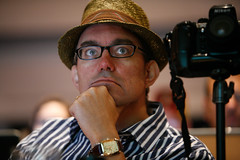 I haven't cried for awhile. Back when doctors first found my cancer, more than a year and half ago, I cried frequently. Later in the year, after I'd been through chemo and radiation and surgery and catastrophic weight loss and side effects, I would sometimes wake in the night and sob in my wife's arms, "I don't want to die."
I haven't cried for awhile. Back when doctors first found my cancer, more than a year and half ago, I cried frequently. Later in the year, after I'd been through chemo and radiation and surgery and catastrophic weight loss and side effects, I would sometimes wake in the night and sob in my wife's arms, "I don't want to die."
I still don't, and I still have cancer. I'm still taking chemotherapy every two weeks, lying in bed for a couple of days and throwing up. But it has become a grinding routine, a long, protracted war against my body's own mutant cells, rather than a fierce battle.
I wish I cried more. I'm not holding it back. When it comes, crying is a great relief. I feel alive.
But I think I'm a bit numb to the threat of death now—I could still die soon, but it seems less likely, since my medical team and I seem to be fighting the disease decently, and I feel pretty well most of the time. My family and I talk about the future, and such talk no longer seems hollow.
I also laugh, especially with my kids, and my wife, and my band. I played another show with them this afternoon, and one thing I enjoy best about it is that pretty much every show, I laugh uncontrollably at least once about something.
It's true that I'm more sentimental now, and get misty-eyed at times when I might previously have been stoic or cynical. Sometimes it's just when I look at my daughters. Sometimes it's when I see pictures from Mars. Sometimes it's when I'm writing a blog post.
Labels: band, cancer, death, family, music
02 September 2008
It is a new world
Included on my ten-year-old daughter's school supply list for this year:
1 USB flash memory key
The smallest and cheapest one we could find was part of a stack of them on a school supply table at Staples. 1 GB for $20, and smaller than an eraser. I think I hear the echoes of my young geeky self swooning in disbelief.
Labels: family, gadgets, geekery, memories, school
01 September 2008
Links of interest (2008-09-01):
- It's a fact: I find it astonishing that the governor of Alaska (Alaska!), and new vice-presidential running mate for John McCain, doesn't think that climate change is human-generated. I'm guessing her house isn't built on melting permafrost.
- I'll let Dan Savage give his trademark trenchant take on the other Sarah Palin news.
- This past week Canon introduced its new EOS 50D SLR (a nice upgrade from the 40D), and Nikon followed with its D90 (which supersedes the D80 and takes movies, a first for an SLR camera). While I use Nikon myself, and the D90 would be great if I needed a new camera, for people just getting into the market, I still think the Pentax K200D is an excellent deal.
- Speaking of photography, the always-snarky Ken Rockwell has (as usual) excellent advice on how to carry less stuff so you make better pictures. I should have heeded his advice when I went up Whistler mountain a few weeks ago. I took a bunch of photos, but only used one lens, even though I schlepped a whole bag's worth of stuff (plus a tripod I never unfolded) up there—just like the guys Ken was making fun of at the zoo.
- I'm a little too old to have ever been all that interested in going to Burning Man, but I'm particularly glad to have avoided this year's dust storm. Yuck.
- Looks like Americans won't be the only ones having an election this fall.
Labels: canon, environment, linksofinterest, nikon, pentax, photography, politics

